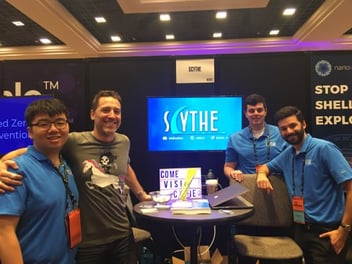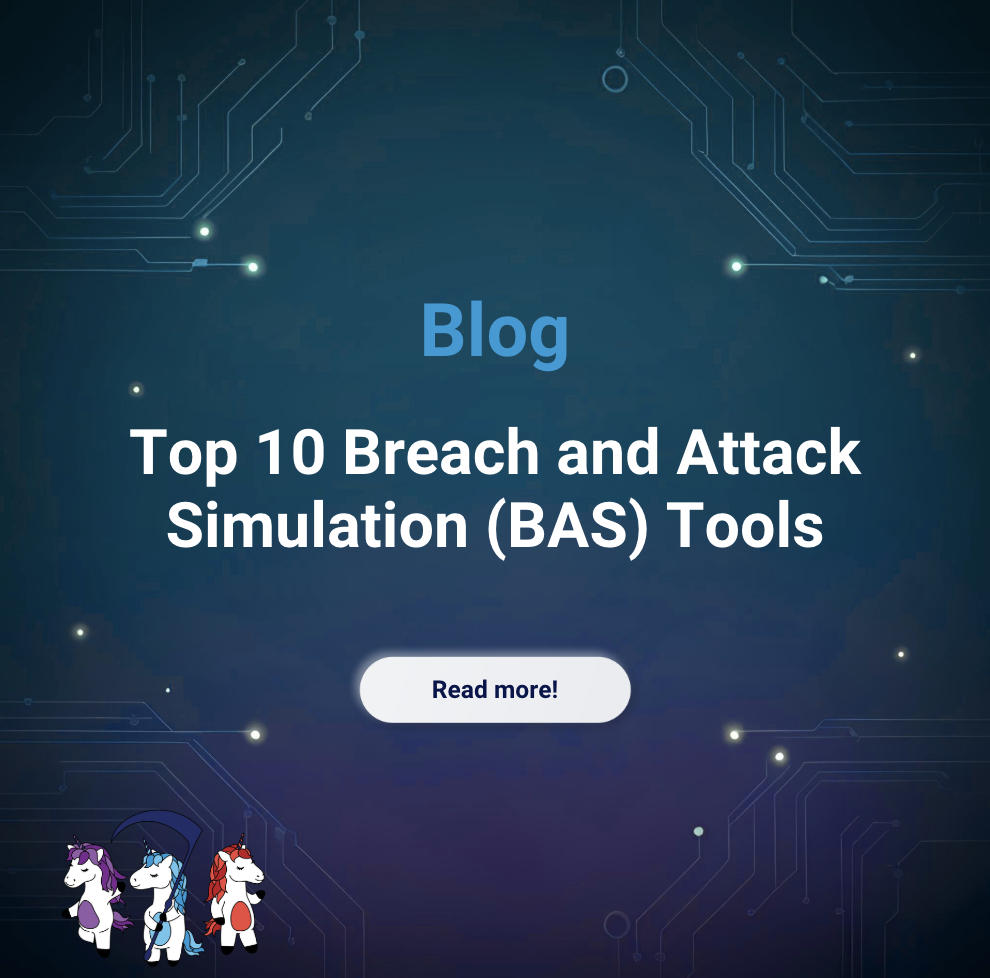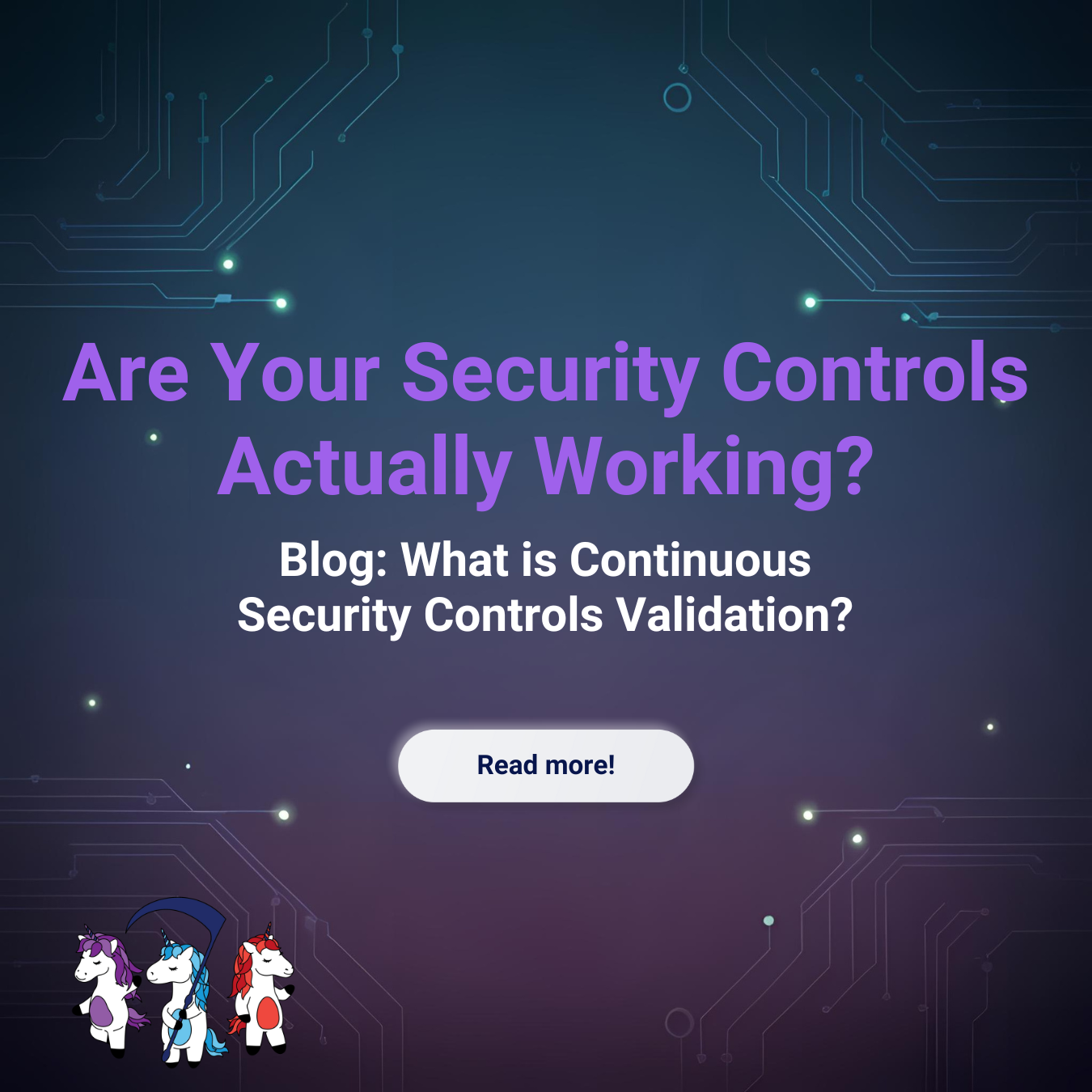
Top 10 Breach and Attack Simulation (BAS) Tools
What are Breach and Attack Simulation/Emulation Tools? In cybersecurity, Breach and Attack Simulation (BAS) and Adversarial Exposure Validation (AEV) ...
SCYTHE
What are Breach and Attack Simulation/Emulation Tools?
In cybersecurity, Breach and Attack Simulation (BAS) and Adversarial Exposure Validation (AEV) serve distinct yet related purposes in testing an organization’s defenses, particularly against threats like ransomware and insider attacks. BAS focuses on simulating specific cyberattacks using predefined scenarios to validate security controls, targeting known tactics, techniques, and procedures (TTPs) such as phishing or data exfiltration. While effective for testing anticipated vulnerabilities, BAS relies on static, playbook-based testing, which can miss adaptive attacker strategies and requires significant maintenance due to its agent-based approach.
In contrast, AEV, a broader category introduced by Gartner, encompasses BAS 2.0 and automated penetration testing, emphasizing continuous exposure management across the entire attack surface. AEV dynamically emulates real-world attacker behavior, using algorithm-driven attack propagation to uncover “unknown unknowns” and prioritize risks based on exploitability and impact. Its agentless, autonomous nature reduces operational overhead and adapts in real-time to emerging threats, making it particularly suited for evolving risks like ransomware’s lateral movement or insider threats’ privilege abuse.
While BAS is simpler and sufficient for organizations with basic security needs, it struggles with novel attack paths and lacks the prioritization offered by AEV’s integration with Continuous Threat Exposure Management (CTEM) frameworks. Conversely, AEV’s adaptive approach better addresses today’s sophisticated threat landscape. For organizations facing complex and evolving risks, AEV’s forward-looking methodology provides a significant advantage over traditional BAS.
What are the Benefits of BAS and AEV?
BAS and, to a greater extent, AEV provide a strategic, proactive approach to strengthening cybersecurity defenses. Unlike sporadic audits or single-point penetration tests, these platforms deliver continuous, automated validation of your security posture, pinpointing strengths, exposing weaknesses, and guiding remediation. Here’s how BAS, and especially AEV, add comprehensive value:
Proactively Identify Exposures
BAS runs simulated attacks based on real-world techniques to uncover threats that may otherwise go unnoticed. These aren't hypothetical threats but they reflect the actual methods used by adversaries, helping your team spot weak points in a safe and controlled way, before attackers do.
Validate Security Controls Continuously
Your security stack is only as strong as its weakest point. BAS continuously validates whether your defenses — from EDR and SIEM to DLP and firewalls — are detecting and responding as intended. It helps you move from assumption to assurance, with evidence that your tools are performing as expected in live conditions.
Gain Complete Visibility into Security Gaps
BAS provides clear visibility into how different layers of your security infrastructure are functioning. From endpoint detection to network defense, it shows where signals are being missed or alerts are not triggering, so you can take targeted action, not just guess.
Unlock Actionable Risk Insights
It’s not enough to know there’s a problem — you need to know what to do next. BAS platforms provide contextual, risk-based insights that help prioritize what to fix first. These recommendations are practical and clear, helping teams move quickly from detection to remediation without losing time.
Build and Maintain Cyber Resilience
By constantly testing your ability to detect, respond to, and recover from attacks, BAS strengthens your resilience across the kill chain. It helps you evolve your defenses as threats change, ensuring your organization stays agile, responsive, and prepared for whatever comes next.
Use Industry-Aligned Scenarios for Real Relevance
BAS isn’t one-size-fits-all. Scenarios can be tailored to reflect the specific threats facing your industry, your region, and your organization’s regulatory requirements. This means you’re testing against attacks that matter — not generic simulations — and aligning your defenses with both risk and compliance goals.
Reduce Risk Over Time with Continuous Validation
Cyber risk is never static, and your defenses shouldn’t be either. BAS enables ongoing measurement and improvement, helping you reduce exposure over time and make informed decisions about where to invest in your security program.
Best Breach and Attack Simulation Tools
Here are the top 10 Breach and Attack Simulation (BAS) tools along with reviews. The information listed below is based on customer research and customer reviews.
SCYTHE
SCYTHE is a leader in adversarial emulation and continuous security validation (AEV), empowering organizations to proactively identify exposures, validate security controls, and measure risk against real-world threats. Trusted by top enterprises and government agencies, SCYTHE enables security teams to automate threat testing, enhance cyber resilience, and maximize security investments.
Features of SCYTHE:
- Authentic attack scenarios that test defenses across the full kill chain
- Structured, repeatable adversary emulation that integrates seamlessly with blue and purple team workflows, maximizing the impact of red team operations
- Controlled, production-safe exploitability testing, simulating real-world attacks with or without agents
- Identifies weaknesses, streamlines incident response workflows, and supports continuous improvement by simulating real-world attack scenarios
- Supports agent or agentless deployment
- Seamless integration with your security stack
Benefits of SCYTHE
- Helps teams reduce Mean Time to Detect (MTTD) and Mean Time to Respond (MTTR) by ensuring teams are better prepared to recognize and act on threats quickly and effectively.
- Responsive customer support team and team of experts
- Weekly workshops delivered by the SCYTHE team
- Empowers red teams to safely replicate adversary tactics, techniques, and procedures (TTPs) across the entire kill chain
- Enables security teams to move beyond theoretical vulnerabilities, focusing on the actual impact of threats and where defenses fail in practice
- Security control validation for stronger, more effective defense—delivered through a controlled, realistic testing environment.
-
Continuous Security Control Validation and ensure tools like EDR, SIEM, DLP, and firewalls are detecting and responding as intended.
Google Mandiant
Mandiant Advantage Attack Surface Management
Mandiant Advantage Attack Surface Management is a robust solution designed to help organizations proactively manage and secure their digital footprint. As part of Google Cloud’s Mandiant portfolio, it provides deep threat intelligence on attackers, their tactics, and the evolving threat landscape. With extensive monitoring — including dark web surveillance — and comprehensive reporting, it equips security teams with the up-to-date intelligence they need to detect, prevent, and respond to cyber threats in real time. By aggregating data from networks, malware samples, and external feeds, the platform creates a unified, actionable view of threats, empowering faster, better-informed decision-making.
Features of Mandiant Advantage Attack Surface Management:
- Continuous attack surface monitoring
- Dark web and underground forum intelligence
- Real-time alerts on emerging threats and vulnerabilities
- Detailed threat actor profiles and tactics
- Aggregation of data from multiple sources (network, malware, security feeds)
- Comprehensive threat landscape reports
- Integration with security operations tools
Benefits of Mandiant:
- Access to world-class, up-to-date threat intelligence
- Helps detect, prevent, and respond to threats faster
- Strong focus on external and dark web monitoring
- Enables better decision-making through aggregated insights
- Valuable for improving organizational resilience and incident readiness
Cons:
- Architecture can be complex and challenging to understand
- Slow and sometimes difficult deployment and implementation process
- Progress can be delayed by technical roadblocks
- May require significant time and resources to operationalize fully
- Best suited for teams with mature security processes and expertise
Cymulate
Cymulate Exposure Validation Platform
Cymulate is a Security Validation and Exposure Management Platform that helps organizations proactively assess and improve their security posture. Leveraging comprehensive Breach and Attack Simulation (BAS) technology, Cymulate continuously tests defenses from the attacker’s perspective, empowering security teams to prioritize remediation and close critical gaps.
Features of Cymulate:
- Automated breach and attack simulation (BAS)
- Continuous security control validation
- Wide range of modules across attack vectors (endpoint, email, web, cloud, SIEM, WAF, Kubernetes)
- MITRE ATT&CK® framework mapping
- Custom assessments and advanced scenarios
- Detailed reporting and remediation guidance
Benefits of Cymulate:
- Helps uncover policy gaps, misconfigurations, and vulnerabilities
- Improves security posture by fine-tuning existing controls
- Drives prioritized, actionable remediation plans
- Provides clear metrics and insights to guide security improvements
- Easy to use for basic scenarios, with strong customer support for advanced use
- Enhances return on security investment by optimizing defenses
- Continuously improves with regular product updates and enhancements
- UI and setup can be confusing for teams coming from traditional scanning tools
- Advanced scenarios require time, expertise, and manual effort
- Implementation can be resource-intensive
- Some modules may generate time-consuming false positives
- Initial implementation experience may vary depending on organizational maturity
AttackIQ
AttackIQ is a Security Optimization Platform that allows organizations to test, validate, and improve their cyber defenses with precision. Built on the MITRE ATT&CK® framework, AttackIQ enables security teams to run continuous, customizable attack simulations that reveal gaps in security controls, misconfigurations, and inefficiencies.
Features of AttackIQ:
- Continuous security control validation
- Customizable real-world attack scenarios
- Regularly updated attack simulation library
- Real-time performance data and reporting
- CPE certification and user training programs
- Flexible platform for cloud and hybrid environments
- Third-party technology integrations
Benefits of AttackIQ:
- Provides critical insights into security gaps and control effectiveness
- Improves overall security posture and resilience
- Strong vendor support and responsive customer service
- Offers valuable training and certification opportunities
- Flexible and customizable to align with unique organizational needs
- Helps mature security teams continuously optimize defenses
Cons:
- Some reviews share there are ongoing software bugs; recent upgrades have caused platform issues
- Delays in updating to key standards (e.g., NIST Rev 5)
- Dashboards and reporting can be less intuitive or actionable
- Lack of on-prem proxy host limits control over agent traffic
- Technical integrations and event field mapping can be challenging
- High-end pricing may be difficult to justify for smaller or highly mature CIRT teams
SafeBreach Platform
SafeBreach transforms how organizations approach security by putting their defenses to the test — before attackers can. As a pioneer in breach and attack simulation (BAS), SafeBreach runs continuous, real-world attack scenarios to uncover hidden vulnerabilities and pinpoint where fixes are needed most. Powered by its extensive Hacker’s Playbook™, a constantly updated collection of attack techniques informed by deep threat research, SafeBreach equips security teams with the insights they need to stay ahead of emerging threats and strengthen their defenses with confidence.
Features of SafeBreach:
- Continuous security control validation
- Extensive attack simulation library
- Proactive vulnerability identification across the enterprise
- Third-party integrations
- Cloud deployment options
- Emulation-as-a-service platform
Benefits of SafeBreach:
- Broad capabilities and flexibility compared to competitors
- Helps proactively uncover vulnerabilities before breaches
- Strong impact on improving security posture
- Exceptional customer service and responsive support team
- Valuable tool especially for small security teams or shops
- Good integration options with other tools
Cons:
- User experience can feel less intuitive or friendly
- Manual, time-consuming setup process
- Frequent bugs during deployment, particularly with cloud configurations
- Internal network reachback issues when using cloud
- Some simulation modules lack depth or fine-tuning
- Ongoing need to submit and follow up on bugs
- May deliver less value for mature CIRT teams compared to small organizations
Picus
Picus Security offers a Security Validation and Exposure Management platform aimed at helping organizations assess, prioritize, and address cyber risks on an ongoing basis. By running simulated attack scenarios, Picus helps security teams test the strength of their defenses, uncover gaps, and apply corrective actions to lower the chances of successful attacks.
The platform is designed to integrate with existing security controls, enabling organizations of various sizes to continuously evaluate the effectiveness of their defenses against real-world threats.
Features of Picus:
- Security control validation
- Cloud security validation
- Automated penetration testing
- Breach and attack simulation
Benefits:
- Provides detailed, actionable reports on security gaps and fixes (firewalls, exploits, intrusions)
- Easy to deploy, navigate, and integrate
- Includes a vast, regularly updated library of threat templates (mapped to MITRE)
- Strong reporting tools and integrations (like Crowdstrike) for addressing gaps and securing quick wins
Cons:
- Reports page occasionally refreshes mid-use
- Setup and integration can be time-consuming
- Some modules feel fragmented or still under development
- Minor UI bugs, especially in the threat builder
- Reporting dashboards can’t yet be fully customized for all existing controls.
FourCore
FourCore ATTACK is an advanced breach and attack simulation (BAS) platform that empowers organizations to evaluate the strength of their security defenses through real-world cyberattack simulations. Designed to proactively expose gaps across the attack surface, it leverages the MITRE ATT&CK framework and zero-day attack scenarios to measure the true effectiveness of security controls. By delivering actionable insights from the attacker’s perspective, FourCore helps organizations turn security testing into continuous, meaningful improvement.
Key Features
- Real-world cyberattack simulations
- Zero-day attack emulation
- MITRE ATT&CK framework mapping
- Automated detection and validation
- Integration with standard APIs and third-party tools
Benefits
- Provides a clear, structured approach to cybersecurity testing
- Proactively identifies gaps before attackers can exploit them
- Offers detailed mapping to MITRE ATT&CK for better threat understanding
- Enables faster optimization of defenses and incident response
Cons / Challenges
- Can be complex to implement, especially for small teams
- Steep learning curve for new users
- Resource-intensive and may require ongoing maintenance
- Potential risk of overcomplicating security operations
Pentera
Pentera is an American cybersecurity software company specializing in automated security validation and penetration testing. Founded as Pcysys in 2015 and rebranded as Pentera in 2021, the company offers a platform designed to help organizations continuously identify vulnerabilities and test their defenses across internal and cloud environments. With rapid product evolution and a strong support team, Pentera aims to make automated pentesting an essential part of modern security programs.
Key Features of Pentera
- Automated security validation and pentesting
- Internal network and cloud environment testing
- Cyberpulses: small, frequent updates adding new exploits
- API integrations for automation and customization
- Cloud-specific pentesting capabilities
- Powerful attack path discovery and vulnerability detection
Benefits of Pentera
- Easy to deploy and get started with
- Provides insight into attack paths and real-world vulnerabilities
- Frequent updates ensure the platform stays current with new threats
- Strong support team that listens to user needs
- Helps organizations strengthen their security posture proactively
- Steep learning curve to fully master the platform
- Reliability issues, including occasional outages and bugs
- Initial deployment can be error-prone, especially on some hardware
- Scalability limitations, such as only one scan at a time in some setups
- Results can be inconsistent, particularly on larger or more complex environments
- Requires intensive support involvement for certain use cases
XM Cyber
XM Cyber is a leading hybrid cloud security company revolutionizing how organizations manage cyber risk. Its attack path management platform continuously identifies hidden attack paths across both cloud and on-premises environments, allowing security teams to proactively block threats before they reach critical assets. By prioritizing the exposures that matter most and cutting off attack chains at key points, XM Cyber helps organizations dramatically reduce risk with less effort.
Key Features
- Continuous hybrid cloud and on-prem attack path management
- Real-time monitoring and alerts on critical exposures
- Automated identification of exploitable attack chains
- Prioritization of high-risk exposures
Benefits
- Provides continuous visibility into critical attack paths
- Helps prioritize and eliminate the most impactful risks
- Reduces manual effort required for threat detection and response
Improves overall security posture across hybrid environments - Well-suited for both small businesses and large enterprises
Cons
- Limited negative feedback reported in available reviews
- Some organizations may require time to adapt to the attack path management approach
- As a specialized platform, it may need to be integrated with broader security ecosystems for maximum impact
SnapAttack
SnapAttack helps organizations manage threats through its proactive threat management platform. By integrating threat intelligence, adversary emulation, detection engineering, and purple teaming, SnapAttack empowers security teams to identify and address vulnerabilities before they are exploited. Its cloud-based solution provides continuous validation of defenses, helping organizations stay ahead of sophisticated threats like ransomware and insider attacks across hybrid environments.
Key Features
- Comprehensive threat detection and management lifecycle
- No-code detection builder and 10,000+ pre-built SIEM/EDR rules
- Real-time threat prioritization with dynamic Threat Profiles
- MITRE ATT&CK mapping for coverage visualization and gap analysis
Benefits
- Enhances visibility into security coverage, answering “Are we protected?” with confidence
- Prioritizes high-impact threats, reducing time spent on low-priority risks
- Streamlines detection deployment, improving operational efficiency with integrations
- Strengthens defenses across industries like finance, healthcare, and critical infrastructure
- Scales from junior analysts to mature SOCs, supporting teams at all maturity levels
Cons / Challenges
- Limited public reviews make it harder to assess widespread user feedback
- May require initial learning for teams unfamiliar with purple teaming workflows
- As a specialized platform, it may need integration with existing tools for full ecosystem coverage
Latest Posts
Related Articles


SCYTHE: Connecting the Red and Blue Transforming Controls Validation with Smart Tagging
Traditional Breach and Attack Simulation (BAS) tools have provided organizations with a limited way...

Enhancing Public Safety and Protecting Critical Infrastructure through Threat Insights
In our rapidly evolving digital landscape and smart cities, critical infrastructure stands at the...





